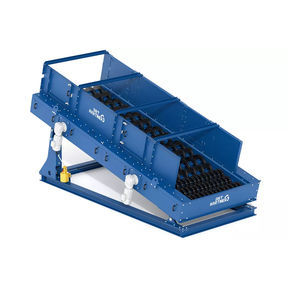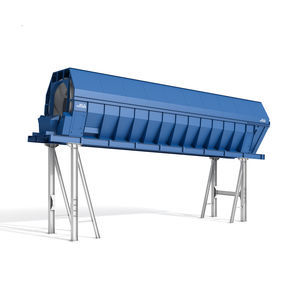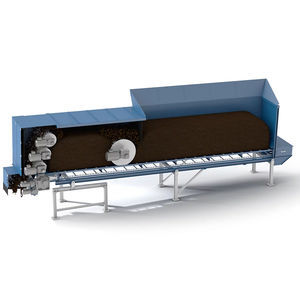
- Farm Machinery
- Transport & Lifting
- Air separator
- Eggersmann Recycling Technology
Air separator BRT HARTNER BBS

Add to favorites
Compare this product
Characteristics
- Type
- air
Description
he lighter material with its low specific weight is separated by air flow from the heavy fraction material. Specially pourable mixed plastics and source material for the production of refuse derived fuel (RDF) are particularly suitable input material for this machine. For good separation results, the ratio of the smallest to the largest particle should be max. 1:4.
For optimal light-/heavy separation, the input material must be evenly discharged onto the acceleration belt of the air belt separator. Under the head of the acceleration belt an air nozzle is placed. The input material passes this nozzle in free fall. Very light components are blown out of the stream over the arch belt directly into the settling chamber. In the settling chamber the light fraction is separated from the air stream and discharged by the light material discharge belt.
In the transfer area of the air belt separator, the heavy parts fall down onto a heavy fraction discharge belt. All other parts bounce against the arch belt of the windsifter and are also separated into light and heavy fractions by the radius and the adjustable inclination of the arch belt.
The arch belt is the heart and core of the BRT HARTNER BBS Windsifter. This conveyor belt is arched and adjustable in several axles regarding its radius and the inclination. According to the chosen settings, specific material parts are sorted into the lightweight fraction and other material parts are sorted into the heavyweight fraction with the conveying movement of the arch belt conveyor. Changes of the settings lead to changes in the separation results.
VIDEO
Catalogs
No catalogs are available for this product.
See all of Eggersmann Recycling Technology‘s catalogsOther Eggersmann Recycling Technology products
Stationary Recycling Machines made by BRT HARTNER
Related Searches
*Prices are pre-tax. They exclude delivery charges and customs duties and do not include additional charges for installation or activation options. Prices are indicative only and may vary by country, with changes to the cost of raw materials and exchange rates.







